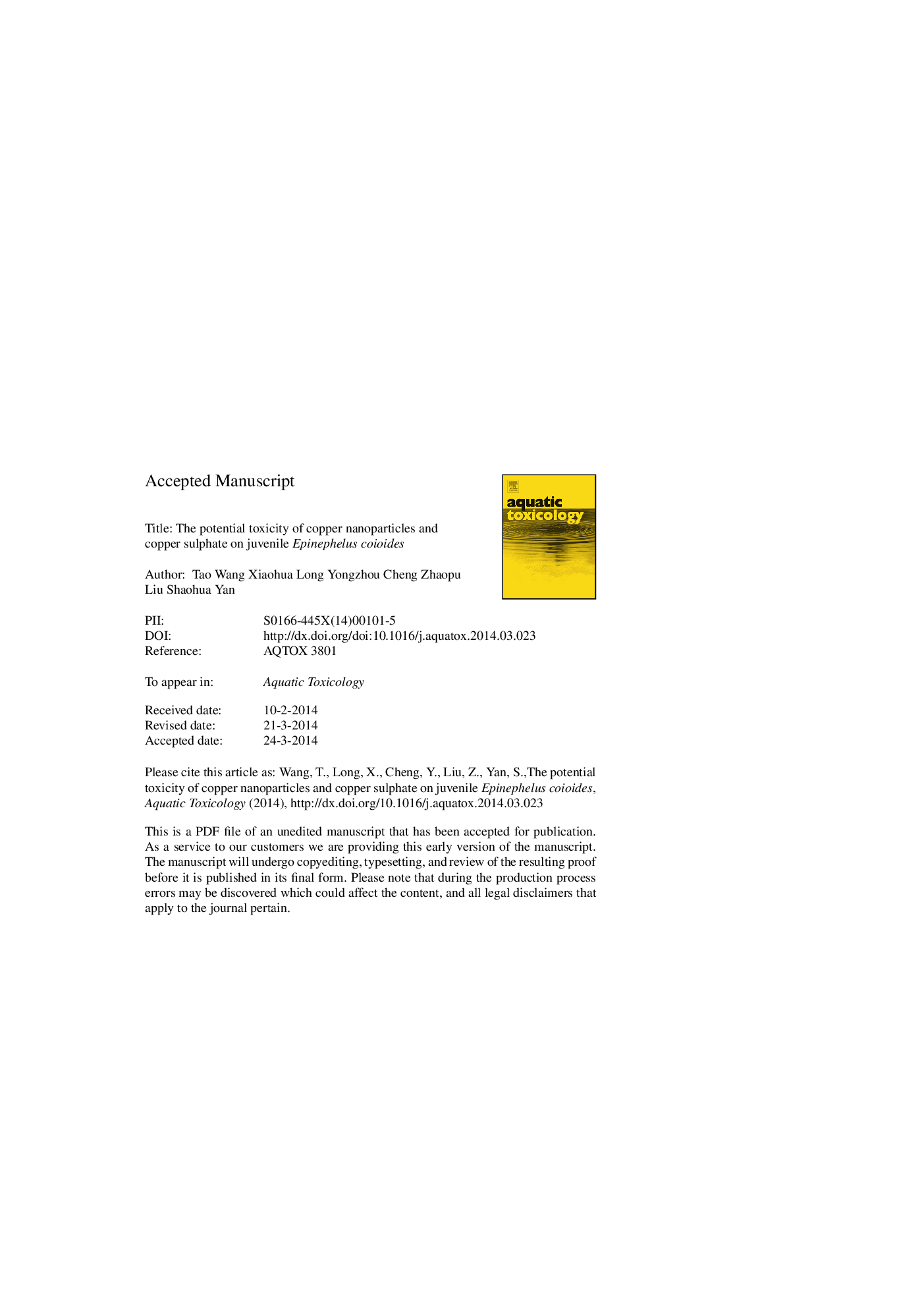| Article ID | Journal | Published Year | Pages | File Type |
|---|---|---|---|---|
| 6382371 | Aquatic Toxicology | 2014 | 37 Pages |
Abstract
Copper nanoparticles (Cu-NPs) were widely used in various industrial and commercial applications. In this study the effects of Cu-NPs and soluble Cu were investigated on juvenile Epinephelus coioides. The fish were exposed in triplicate to control, 20 or 100 μg Cu Lâ1 as either copper sulphate (CuSO4) or Cu-NPs in a semi-static aqueous culture for 25 days. The growth parameters were significantly lower at 100 μg Cu Lâ1 as CuSO4 or Cu-NPs treatment compared to control. Time-dependent Cu accumulation in all tissues increased with increasing the Cu dose. The percentage of total Cu found in remaining tissues (head, bones, fins, etc.) decreased more in the CuSO4 than Cu-NPs treatment after 25 days, but increased in all other tissues (especially in liver). Compared with the control, either Cu-NPs or CuSO4 induced higher malonaldehyde concentration in tissues by overwhelming total superoxide dismutase activity, total glutathione concentration and Na+/K+-ATPase activity, but the opposite results were recorded for the brain. With increasing the CuSO4 or Cu-NPs dose, apoptosis was exacerbated in the liver and gills, more so by CuSO4 than Cu-NPs. Overall, these findings showed that Cu-NPs had the toxic effects similar to dissolved Cu; hence, Cu-NPs need to be included in the assessment of toxicological impacts in the aquatic environment.
Related Topics
Life Sciences
Agricultural and Biological Sciences
Aquatic Science
Authors
Tao Wang, Xiaohua Long, Yongzhou Cheng, Zhaopu Liu, Shaohua Yan,
